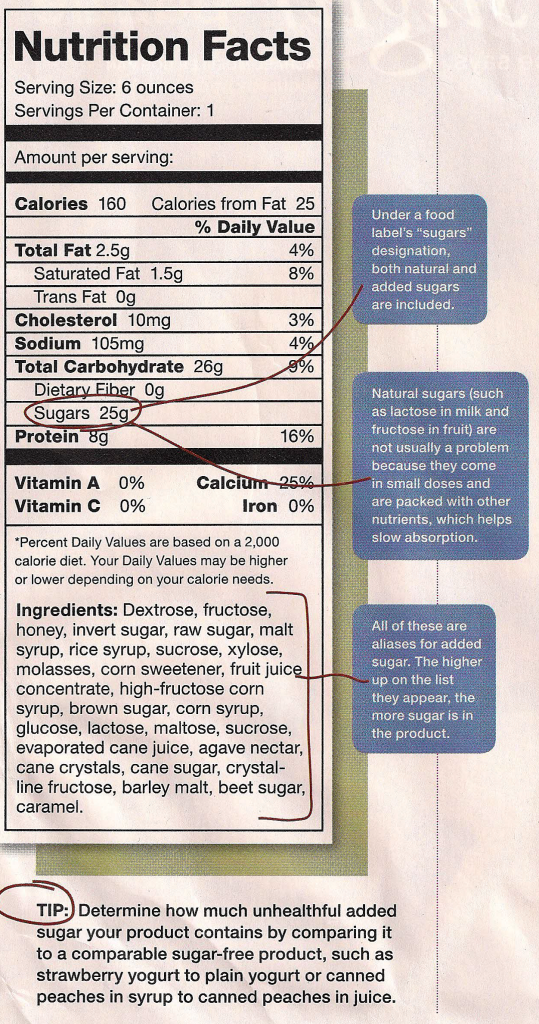Beth Colucci, IART Fitness Clinician
Many holidays goods are homemade, so even though we know they aren’t the greatest for us, at least we know what goes into them. But what about all the processed foods we find lurking in cabinets, drawers, and secret stashes? If you take a look at the ingredient list, I’m sure you’ll find sugar as one of the first ingredients, followed by a lot of words that the normal person can’t pronounce and/or has no idea what they are. Safe rule: If sugar is one of the first two ingredients, or you can’t pronounce the ingredients, you probably shouldn’t eat it.
“High-fructose” corn syrup (HFCS) and table sugar (sucrose) are actually composed of the same two molecules – glucose and fructose. The glucose and fructose that make up sucrose are found naturally in many foods, and are not dangerous to the body. Glucose, in fact, is one of the body’s preferred sources of fuel, and helps the billions of cells in our bodies to function. Fructose, however, when consumed in excess, can cause a problem. According to Robert Lustig, a pediatric endocrinologist at the University of California, fructose is a, “chronic poison…it doesn’t kill you after one meal, it kills you after 10,000. The problem is, every meal now is a fructose meal.” Food production companies add extra fructose to nearly every packaged product, from ketchup to cookies and pretzels.
 The dramatic increase in type-2 diabetes, and other metabolic conditions, over the past 20 years is undeniably connected to the increase in the production and consumption of processed foods. The underlying culprit in metabolic conditions is the large amount of sugar found in processed foods. Due to the recent hype and outrage over the use of high fructose corn syrup, companies are claiming to reduce its use in the making of food products. However, now these companies are adding sugar monsters under different names. They are becoming quite sneaky about adding sugar into their products, without actually using the word, “sugar.” Use the chart to the right to learn the many names of sugar, and to help you decipher how much sugar is really in your foods.
The dramatic increase in type-2 diabetes, and other metabolic conditions, over the past 20 years is undeniably connected to the increase in the production and consumption of processed foods. The underlying culprit in metabolic conditions is the large amount of sugar found in processed foods. Due to the recent hype and outrage over the use of high fructose corn syrup, companies are claiming to reduce its use in the making of food products. However, now these companies are adding sugar monsters under different names. They are becoming quite sneaky about adding sugar into their products, without actually using the word, “sugar.” Use the chart to the right to learn the many names of sugar, and to help you decipher how much sugar is really in your foods.
